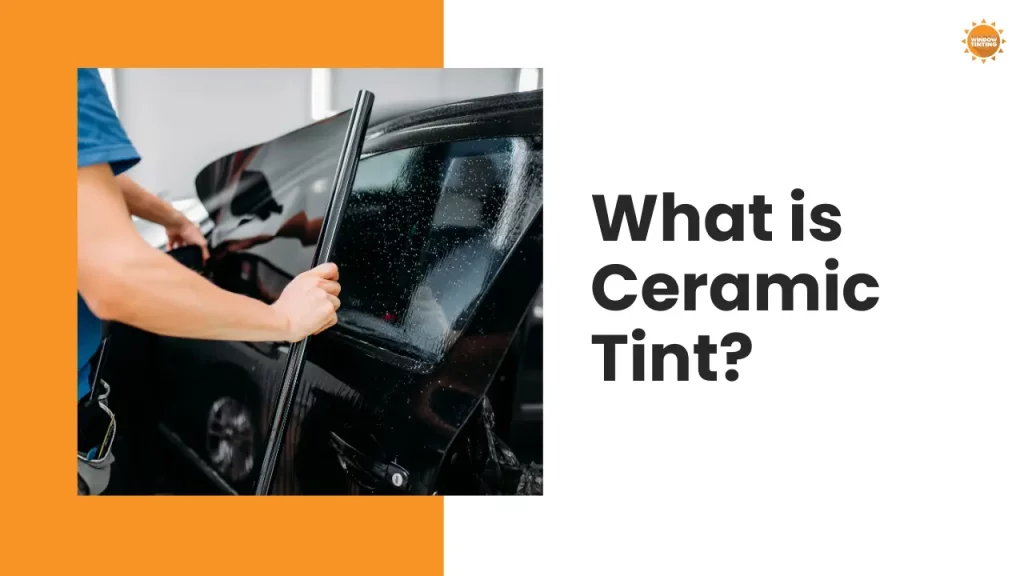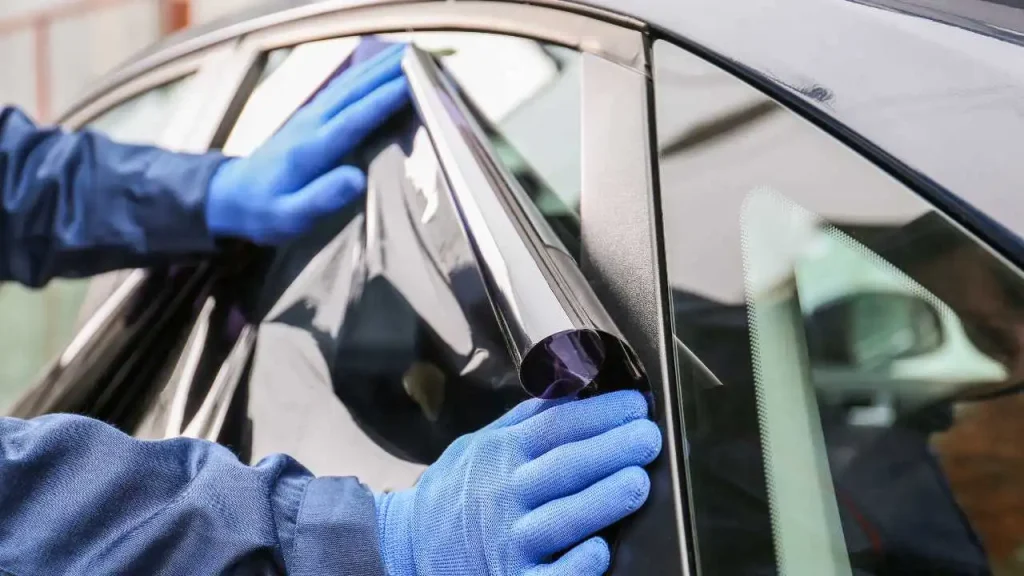
Window tint: we’ve all seen cars whiz by with those darkened windows that offer a stylish glimpse of mystery. However, did you know there’s a high-performance contender in the automotive window tint market that doesn’t rely on metallic components? Get ready to discover the world of ceramic tint and the numerous ways it can enhance your driving experience.
The Basics of Ceramic Window Tint
Ceramic tint is an advanced type of window film. Where traditional tints utilize dyes or metals to create their shading effect, ceramic tint employs nanoscopic ceramic particles. These particles are both non-conductive and non-metallic, leading to significant advantages for your car. Let’s break down why ceramic tint has soared in popularity in recent years.
Advantages of Ceramic Tint
Here’s a look at the major benefits you can expect with ceramic window tint:
- Exceptional Heat Rejection: Ceramic tint excels at blocking out infrared radiation, a significant component of the heat we feel from the sun. This translates to a remarkably cooler car interior, even in scorching weather. You won’t find yourself blasting the air conditioning as often.
- Ultimate UV Protection: UV rays are notorious for fading upholstery and dashboards, not to mention their harmful effects on our skin. Ceramic tint acts as a formidable barrier, blocking up to 99% of UV rays. This helps preserve the look of your car’s interior and offers essential protection for you and your passengers.
- Crystal-Clear Visibility: Unlike metallic tints, which can diminish visibility slightly, ceramic tint maintains optical clarity. Enjoy an unobstructed view of the road, both day and night.
- Glare Reduction: Say goodbye to the blinding glare of oncoming headlights or reflections on your windshield. Ceramic tint noticeably minimizes glare, leading to safer and less stressful drives.
- Signal-Friendly: Cell phones, GPS devices, and other electronics may encounter interference with metallic window tints. Ceramic tint is non-metallic, so you can confidently use all your devices without issues.
- Increased Shatter Resistance: While not its primary purpose, ceramic tint acts as a protective layer on your car windows. If an accident occurs, it can help deter shattering, thus improving safety.
Ceramic Tint vs. Traditional Tint
The main differences between ceramic and traditional tint lie in composition, heat rejection abilities, and cost:
- Composition: Traditional tints typically rely on dyes or metal. Ceramic tint uses ceramic nanoparticles.
- Heat Rejection Ceramic tint significantly outperforms traditional tints in blocking infrared heat.
- Cost: Due to its advanced technology, ceramic tint tends to be a more expensive option.

Choosing the Right Shade of Ceramic Tint
- Understanding VLT: Visible Light Transmission (VLT) is a percentage that tells you how much visible light a window tint allows. A 50% VLT tint lets in half the light, while a 5% blocks 95%. Lower VLT means a darker tint.
- Legal Considerations: Before choosing your tint shade, it’s crucial to research your state’s or region’s specific laws on window tint darkness. These regulations vary and often have different limits for front, side, and rear windows.
- Balancing Style and Function: Consider the factors most important to you:
- Privacy: Darker shades offer more privacy inside your vehicle.
- Heat Rejection: Even lighter shades of ceramic tint offer excellent heat rejection. If extreme heat is your main concern, you might favor a slightly darker tint.
- Aesthetics: Choose a VLT that creates the look you desire for your car.
Ceramic Tint Installation: DIY vs. Professional
- The DIY Route: DIY ceramic tint installation requires patience, precision tools, and a clean workspace. While it’s doable, improper installation can lead to bubbles, peeling, and reduced performance.
- Benefits of Professional Installation: Experienced installers have the skills and specialized tools to ensure a flawless application that maximizes the tint’s lifespan and effectiveness. You’ll also have peace of mind knowing the job is done right.
- Finding the Right Installer: Look for experienced installers with specific expertise in ceramic tint. Check reviews, ask about warranties they offer, and get quotes from multiple shops to compare prices.
Ceramic Tint Maintenance and Care:
- Proper Cleaning: To clean your tinted windows, use a gentle, ammonia-free glass cleaner and a soft microfiber cloth. Avoid harsh chemicals or abrasive scrubbing, which can damage the tint.
- Addressing Bubbles and Issues: Small bubbles or imperfections may appear after installation but should dissipate within a few days. If significant flaws persist, contact your installer, as they may be covered by warranty.
- Warranty Considerations: Reputable ceramic tints come with manufacturer warranties. Choose a product with good coverage to protect against defects like fading, peeling, or bubbling down the line.
Beyond Automotive: Other Applications of Ceramic Tint
- Residential Tint Benefits: Ceramic window film offers significant advantages for your home. It blocks heat and glare, lowers energy bills, protects furniture from fading, and enhances privacy without obstructing your view.
- Commercial Building Applications: Businesses benefit from ceramic tint in similar ways. They often consider it to control temperature fluctuations, reduce energy costs, protect merchandise from UV rays, and even add a security element.
Is Ceramic Tint Right for You?
Deciding whether ceramic tint is worth the investment for you depends on the following factors:
- Climate: If you live in a hot and sunny region, the dramatic heat reduction provided by ceramic tint can be a substantial benefit.
- Budget: Weigh the premium cost of ceramic tint against the longevity and significant benefits it offers.
- Priorities: Is exceptional heat rejection and UV protection your primary concern, or is your focus mainly on appearance?
Conclusion
Ceramic tint goes above and beyond standard automotive tints. If you prioritize heat rejection, UV protection, clarity, and a comfortable driving experience and are willing to pay a premium price, then ceramic tint could be the right upgrade for your vehicle.
Frequently Asked Questions
No, thanks to its non-metallic nature, it won't interfere with electronic components.
Compared to other tints, ceramic is highly resistant to scratches.
With proper care, high-quality ceramic tint can last for many years.
Due to its delicate nature, professional installation is always recommended.
